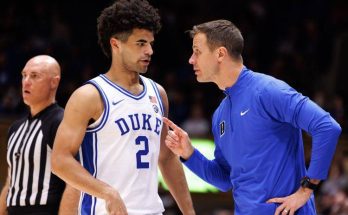Alabama’s program has long been defined by its uncanny ability to attract elite talent, particularly along the offensive line, and the landing of five‑star bigman Jimmori Robinson represents another defining moment. Robinson is regarded as one of the top true freshman recruits in the entire country. From the moment his commitment became public, observers across college football have recognized it as a landmark acquisition that reinforces Alabama’s reputation as the premier destination for offensive line and trench talent. Robinson’s combination of size, athleticism, and technique places him among an elite group of blockers who can transform a unit overnight. He is widely regarded as a future anchor, someone who can dominate at tackle, who possesses the length, burst, and power to impose his will in both the running and passing games. Measuring in at roughly 6‑6 and 325 pounds coming out of high school, he already moves with surprising fluidity, showing the ability to pull, reach block, and clear lanes in space. Evaluators frequently mention his heavy, violent hands, his ability to punch and finish blocks, and his natural ability to generate momentum into defenders. In run blocking scenarios he routinely overwhelms opponents, caving in edges and sealing off lanes, while in pass protection he serves as a looming, anchored presence capable of absorbing rushers through elite balance and leverage. At Alabama, a program that consistently churns out NFL-caliber offensive linemen, Robinson fits seamlessly into the tradition, poised to join a lineage of dominant blockers who shape games by controlling the line of scrimmage. Analysts describe him as a generational talent who may require refinement in terms of flexibility—especially lateral mobility and ankle bend—but note that those are the kind of fine‑tuning issues that elite collegiate strength and conditioning programs routinely address. With access to advanced training and coaching, most expect those limitations to diminish rapidly, leaving behind a polished, versatile lineman capable of playing at tackle or inside at guard if needed.
His recruitment and eventual commitment to Alabama sends ripples through the national recruiting landscape. Top recruits everywhere take note when multiple five‑star talents elect to join the Crimson Tide offensive front; it emphasizes to the next wave of prospects that gap at Alabama runs deep and the development environment is unmatched. It also accelerates internal momentum—the program’s current offensive line commits are emboldened, ambitious, and committed, and adding Robinson to that group creates an aura of excellence that raises everyone’s standard. For Alabama’s coaching staff, bringing in Robinson confirms that the offensive line remains a top-tier pipeline in the era of the transfer portal and NIL dynamics. Despite increased competition from schools leveraging name, image, and likeness offerings and portal entrances by veteran linemen, Alabama continues to secure blue‑chip talent coming directly from high school, signaling enduring dominance in foundational positions. Observers have remarked that the psychological impact on opposing defensive coordinators is that much greater when they face a unit loaded with incoming five‑star recruits. It’s demoralizing for opponents to know that the Tide can insert a true freshman of Robinson’s caliber who offers immediate physicality and technique, without having to wait years for development.
Robinson’s arrival also fortifies continuity with Alabama’s storied tradition. Previous elite linemen—players who have won national awards or become All‑Americans—forever link their names to dominant Alabama offensive schemes. Robinson’s projection suggests he will be part of that lineage. Already, projections place him as an early contributor, assuming he enrolls early and adapts quickly to the strength program and technique adjustments. Analysts have noted that he’s good enough physically to play immediately in the SEC, and that he could blow open huge running lanes from day one. He has repeatedly shown a nasty streak on the field, finishing blocks and hustling downfield in pursuit, indicating a motor and competitive drive consistent with Alabama’s top performers. His relative youth as a true freshman versus a transfer adds extra weight to the commitment—he is taking the crown as one of the most sought‑after recruits in that class, not merely a portal addition seeking a short‑term tumor.
The five‑star designation elevates expectations. Fans and media will expect elite outcomes. Historic precedent shows that Alabama tends to develop such elite recruits into national award winners and NFL prospects. By bringing in yet another five‑star, especially at a premium position like offensive line, Alabama reinforces its roster construction model. That model hinges on securing top‑end talent and turning recruits into pro ready players. When scouting reports emphasize Robinson’s explosive punch, core strength, thigh and trunk power, fluidity for his size, and ability to pull in space or deliver impact at the point of attack, those are precisely the hallmarks of future All‑SEC and All‑American linemen.
Robinson’s addition also magnifies internal competition on the roster. Returning starters and fellow incoming linemen are now being challenged by a prospect with first‑round upside. That competitive environment breeds excellence, as each player must elevate his game to retain or earn starting roles. Alabama’s past classes have shown that competition breeds high outcomes—the best linemen emerge, and the rest are well‑prepared to step into larger roles. Robinson’s presence ensures that camaraderie and rivalry within the group will reach new levels. Moreover, it sends a message beyond Tuscaloosa: to recruits in adjacent classes who specialize in power football, trench play, or edge blocking: the line room is deep, you’re being surrounded by similar talent, and success here requires elite toughness and skill. Top players want to compete with the best, and Robinson helps to create that perception.
On a schematic level, having Robinson in camp enables Alabama to maintain flexibility in both running schemes and passing concepts. He can serve as a textbook left tackle with pass‑set ability, or move inside if needed to guard depending on matchups. That versatility is valuable for play‑calling coordinators who want to use pulling G‑lead concepts, zone reach runs, gap‑scheme power, and tight end assists knowing their edges are fundamentally stable. A prospect who can absorb contact at the point, climb to the second level, and maintain balance through space adds structural integrity to the offense. It gives the system schematic options without compromising physical dominance. It also supports continuity if injuries or departures impact other positions. Alabama’s offensive line produces NFL draft picks every year, and Robinson fits the mold of raw natural ability strong enough to transition fast and project at an elite level.
The national narrative around Alabama’s recruiting gains momentum each time such a high‑profile commitment is announced. It excites fanbases, draws media attention, and energizes existing commit groups. It also feeds into NIL marketplaces—brands and donors see opportunity in lining up with players projected toward stardom. Robinson’s commitment helps validate those NIL investments and cements program credibility. Even recruits who are not yet committed take notice: if Alabama can land Robinson over other power conference suitors, they know the Tide still exerts elite recruiting authority even without head coach Nick Saban in his long‑tenure glory days. It demonstrates that the institutional culture, coaching staff, and brand continue to attract top lamps of potential.
It’s important to contextualize Robinson’s place in Alabama’s broader offensive line momentum. In recent years, Alabama has consistently brought in multiple top‑100 overall recruits at OL, producing starters, NFL draft picks, and dominate units. Robinson elevates that standard, representing the next peak. Commentary around his signing emphasized that Alabama yet again beat out major suitors like presumably LSU, Georgia, and others high on his list. Observers have interpreted that as a sign that Alabama’s recruiting black‑belt status remains intact. Analysts highlight that Robinson isn’t simply another high‑rated recruit, but one of the nation’s top true freshmen power prospects, someone capable of reshaping positional expectations.
The commitment also adds strategic ammunition for Alabama’s in‑state recruiting efforts. Potential recruits from Alabama, Georgia, Florida, and Louisiana who measure similarly—tall, explosive, physical blockers—see Robinson signing and conclude that they are competing with the best peers in the nation. That accelerates internal recruiting pipelines since peer‑driven connections are powerful motivators. Many top prospects want to join a class where peers they respect are also committed; Robinson creates that gravitational pull.
At the fan level, commitment ceremonies and announcement graphics showcasing Robinson wearing Alabama crimson ignite excitement across social channels. Headlines celebrate Alabama “landing” a five‑star talent. The psychological effect ripples through regional recruiting classes—rivals sense pressure, recruits feel drawn to the program, and narrative builds that Alabama remains the gold standard in trench recruiting. In year‑one under new coaching leadership, that signal matters. It affirms that the new staff can maintain the high bar set by predecessors and that the program’s reputation isn’t tethered to a single coach but to a collective identity of excellence.
Robinson’s presence also provides narrative fuel for the upcoming season. Analysts will watch his spring practice snaps, his fall camp reps, and any early playing time in 2025. If he performs strongly in padded drills, Alabama’s offensive front immediately becomes a storyline throughout the SEC: a top defensive line versus a stellar new recruit. His progress will likely be tracked nationally as a barometer of Alabama’s class talent converting to on‑field impact. Should he emerge as a freshman starter or rotational presence, that further reinforces recruiting momentum for the following cycle.
Moreover, Robinson’s recruitment fits a broader strategic vision: stacking talent at the most physically demanding positions. While skill players gain attention, Alabama’s longest‑tenured formula emphasizes trench dominance, securing lines of scrimmage control first. With Robinson on board, the offensive line room is now anchored by multiple blue‑chip prospects with pro potential. That composition enables the offense to ground‑and‑pound effectively, keeping pressure off the quarterback, opening rushing lanes, and sustaining protection even under blitz. From an offensive coordinator’s perspective, having a physical blocker with Robinson’s traits allows greater flexibility on pace, run‑pass balance, and game‑planning against elite opponents.
In conclusion, the commitment of five‑star bigman Jimmori Robinson—universally acknowledged as one of the nation’s top true freshman recruits—embodies a seminal moment in Alabama’s ongoing offensive line momentum. Born of size, strength, agility, and projection, Robinson exemplifies the kind of elite trench talent Alabama has made its signature. His presence boosts internal competition, validates the program’s development model, maintains recruiting dominance, and galvanizes narrative across fans, media, and recruits. For a program that defines itself through sustained excellence in the trenches, Robinson’s landing is more than a single recruit—it’s a recommitment to the physical identity and recruiting supremacy that has made Alabama the standard‑bearer.

